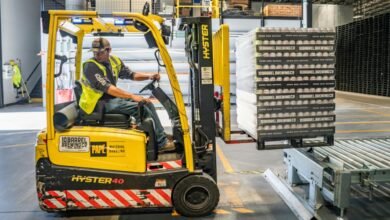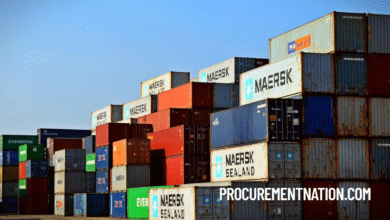ProcurementNation.com: Flexible Supply Chain Model Explained

What Is a ProcurementNation.com Flexible Supply Chain Model?
Volatile global market, supply chain flexibility has become more of a necessity than a luxury. ProcurementNation.com champions a flexible supply chain model that is dynamic, responsive, and built for change. Unlike traditional systems that operate in rigid silos, ProcurementNation.com promotes a model designed to adapt quickly to disruptions, scale with demand, and leverage cutting-edge technology. This approach is essential for businesses aiming to remain competitive in a fast-evolving landscape.
Key Components of a Flexible Supply Chain
Agile logistics
ProcurementNation.com highlights the importance of agile logistics, where transport, warehousing, and distribution processes are optimized for speed and adaptability. This means rapid adjustments to routes, modes of transportation, and storage options in response to shifting needs.
Real-time data visibility
With ProcurementNation.com’s model, businesses benefit from real-time data integration across the entire supply chain. This visibility allows for proactive decision-making, enhanced forecasting, and immediate response to any issues that arise.
Scalable operations
Flexibility means being able to scale up or down without major disruptions. ProcurementNation.com emphasizes systems that are modular, so businesses can expand or contract resources as needed without sacrificing performance.
Strong supplier relationships
Building strong, collaborative relationships with suppliers is another pillar of the ProcurementNation.com approach. These partnerships ensure mutual trust, streamlined communication, and better alignment on goals, enabling quick pivots when market conditions change.
Why Flexibility Is Crucial in Modern Supply Chains
Responding to market changes
The ability to adapt to sudden shifts in consumer demand, regulatory changes, or economic fluctuations is vital. ProcurementNation.com ensures companies stay agile and market-ready.
Handling supply disruptions
From pandemics to geopolitical conflicts, disruptions are inevitable. A flexible supply chain model as advocated by ProcurementNation.com helps companies absorb shocks and maintain continuity.
Meeting customer expectations for speed and customization
Today’s consumers expect fast delivery and personalized experiences. ProcurementNation.com’s model enables businesses to deliver on these demands without compromising efficiency.
Traditional vs. Flexible Supply Chain Models
| Aspect | Traditional Model | Flexible Model (ProcurementNation.com) |
| Structure | Linear, rigid | Dynamic, modular |
| Response to Disruption | Slow and reactive | Fast and proactive |
| Technology Integration | Limited | Advanced and integrated |
| Scalability | Difficult | Easy and seamless |
| Supplier Collaboration | Transactional | Strategic and collaborative |
Pros and Cons Table
| Model Type | Pros | Cons |
| Traditional | Predictable, well-documented systems | Poor adaptability, slow response |
| Flexible | Agile, resilient, customer-focused | Requires investment, cultural change |
How Technology Enables Supply Chain Flexibility
Technology is the backbone of the ProcurementNation.com flexible supply chain model. Innovations that drive this transformation include:
- AI (Artificial Intelligence): Predicts demand patterns and automates decision-making.
- IoT (Internet of Things): Provides real-time tracking of goods and machinery.
- Blockchain: Enhances transparency and trust in transactions.
- Cloud platforms: Enable remote access to inventory, logistics, and supplier data, facilitating swift changes.
Real-World Examples of Flexible Supply Chains
Leading global brands like Amazon and Zara have successfully implemented flexible supply chains. Amazon leverages data and logistics automation to adapt to customer behavior instantly. Zara uses rapid design and manufacturing cycles to stay ahead of fashion trends. ProcurementNation.com offers similar strategies tailored to different industries, helping businesses of all sizes become more responsive and resilient.
Benefits of Adopting a Flexible Supply Chain Model
- Faster response times: Businesses can quickly adapt to disruptions or opportunities.
- Cost efficiency: Reducing waste, optimizing inventory, and automating processes help save money.
- Enhanced customer satisfaction: Better service levels, personalization, and reliability translate to happier customers.
- Reduced risk exposure: Diversified sourcing and contingency planning reduce the impact of unexpected events.
Challenges in Building a Flexible Supply Chain
Despite its advantages, transitioning to a flexible model isn’t without challenges. Companies may face resistance to change, require significant upfront investment, and need to overhaul legacy systems. ProcurementNation.com guides businesses through these hurdles with tailored roadmaps and support.
Tips for Transitioning to a Flexible Supply Chain
- Assess current capabilities: Identify strengths and weaknesses in your current supply chain.
- Start small and scale: Pilot flexibility initiatives in specific areas before a full rollout.
- Invest in digital tools: Leverage platforms and technologies recommended by ProcurementNation.com to support agility.
- Train your workforce: Equip your team with the skills and mindset needed to thrive in a flexible environment.
The Future of Flexible Supply Chains
Looking ahead, ProcurementNation.com envisions supply chains that are not just reactive but predictive. AI, machine learning, and autonomous logistics will take center stage. Sustainability and ethical sourcing will also become core components of future-ready supply chains.
Is a Flexible Supply Chain Right for Your Business?
In an era of uncertainty, a flexible supply chain isn’t just a strategic advantage—it’s a business imperative. ProcurementNation.com provides the blueprint for organizations to build supply chains that are adaptive, resilient, and customer-centric. If your business values speed, efficiency, and long-term growth, it’s time to explore the flexible supply chain model with ProcurementNation.com.




